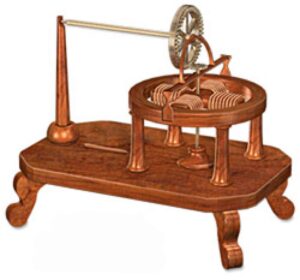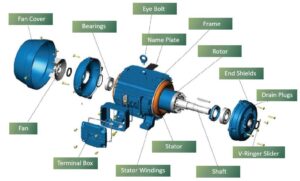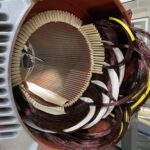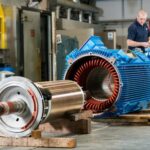A BRIEF HISTORY OF ELECTRIC MOTORS
Since the birth of technology, the pace of inventions and innovations has continued to accelerate. New inventions and technologies make our lives easier, but interestingly, technology often leads to new ideas and discoveries, making it easier to design and build even new technologies. This rapidly evolving cycle of innovation continues to reshape and redesign the world we live in.
The issue of electric vehicle technology has not been resolved, following this innovative process over the past 200 years. Looking back on the invention of the first electric motor in 1832, it is hard to imagine the impact that electric motors have already had on our lives and other technologies, and it is even harder to imagine the next 200 years of reconstruction. By recounting the history of the electric engine, we will see a faster cycle of innovation in live action and better understand what to expect in the future.
First Electric Motor
Hans Christian Orsted was examining electricity in 1820, when he noticed that the compass was tilted away while holding an electric pole near it. He had just discovered electromagnetism and although no doubt he did not understand the impact of his discovery, he simply put the ball forward to develop the technology of electric vehicles.

Observation of the deflection of a compass needle by Hans Christian
History is made when Thomas Davenport of Vermont invented the first official battery-powered electric motor in 1834. This was the first electric motor that had enough power to perform a specific task and was developed to power a small printing press. Various Davenport motors were able to run a model trolley on a circular track and other functions. In time, the trolley became the first electric power car.

Davenport’s motor
Invention of the DC Motor
William Sturgeon invented the first DC engine that could provide enough power to drive machinery, but it was not until 1886 that the first DC engine was produced that could run at a steady pace under changing load. Frank Julian Sprague was its founder, and it was this motor that gave the impetus to the widespread adoption of electric motors in industrial use.

Frank Julian’s DC motor
Sprague’s electric motor removes sparks, loses power from all windings, and can deliver power at constant speeds – making it the first ‘active’ DC car, allowing for widespread use of electric motors. Sprague’s car designs were reliable and powerful, but the efficiency of these designs left much to be desired. Sprague was to use his engines to develop the first electric car system the following year in Richmond, Virginia in 1887.
AC Induction Motor
Despite the great discovery of Davenport many years earlier, electric motors were not widely used at commercial level for another 50 years. Scientists and engineers continue to develop various types of electric motors with the aim of making them ideal for commercial use. Soon, electric motors began to be used in all industries, factories, and homes.
In 1887, Nikola Tesla made it into the halls of electric motor history when he invented the AC induction engine which he successfully patented a year later.

Nikola Tesla’s AC induction motor
It was not suitable for road vehicles but was later replaced by Westinghouse engineers. In 1892 the first active induction engine was developed, followed by a rotating bar rotation, making the unit suitable for use in automotive systems.
Development of Three-Phase Motor
In 1891, General Electric started making three-phase induction motors to make motors more reliable and efficient. In order to use the bar-winding rotor design, GE and Westinghouse signed a separate license agreement in 1896.

Three-phase AC induction motor
Modern Electric Motors
In 1921, a new design concept for electric motors was introduced and increased its reliability and efficiency. Although a car maintenance team was launched in the United States to prevent damage caused by friction between parts, a small air gap between the rotor and the stator has also been found to facilitate the flow of electromagnetic flux into DC machines, further increasing its efficiency.

Modern DC motor
In the 21st century, AC and DC electric motors are now widely used in industry around the world and are an integral part of many applications.

AC induction motor
From electric wheelchairs and stairlifts to industrial automation, flexible transport, and solar panels. Electric motors have revolutionized the whole world through its applications in everyday life. World would be a very different place without electric motors.
ElectricmotorshopJobs.com – History of electric motors. Keywords – electric motors, electric motor shop jobs, electric motor jobs, electric motor technician jobs, electric motor rewinder jobs


